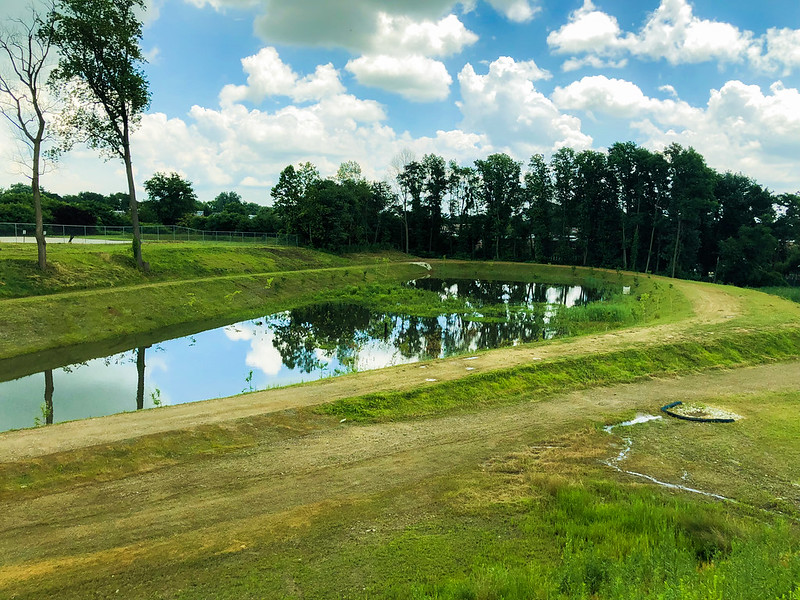Yesterday, we joined local businesses and representatives from City Hall at the site of a massive new green stormwater system in Northeast Philadelphia to recognize a successful public-private partnership that we like to think is a model for future projects across the city.
Present for the ribbon-cutting event were City of Philadelphia Managing Director Michael DiBerardinis, 10th District City Councilman Brian O’Neill, Infrastructure Solution Services CEO Corey Wolff, Ken Bates, Director of Site Engineering at H2O Infrastructure, and our very own Commissioner, Debra McCarty.
Created with the help of a $1.6 million grant we issued through our stormwater program, the Sandmeyer Regional Stormwater Facility collects runoff from 20 industrial properties covering 40 acres along Sandmeyer Lane in the city’s Bustleton neighborhood.
“The business owners who got on board with the improvements we see here today embraced a spirit of innovation to create what is one of the largest stormwater management projects we have seen to date,” Commissioner McCarty told the crowd gathered for the event. “This project is the definition of thinking big, both in terms of the environmental impact and the long-term financial and maintenance planning that made this investment a no-brainer for local business owners.”
How it Works:
Water is funneled into two large wetland basins that can hold about 1.3 million gallons during a typical one-inch rainstorm.
Rather than rush directly into a nearby Pennypack Creek tributary, the runoff is filtered through soil and absorbed by plants, removing pollutants and improving water quality.
The 18-month construction project led by Infrastructure Solution Services (ISS) involved moving 61,000 cubic yards of earth and planting nearly 1,000 trees, shrubs, and other plants. Because the system can manage nearly 60 million gallons of runoff over the course of a typical year of Philadelphia weather, the green retrofit is also earning the local businesses a significant reduction in monthly stormwater fees.
Those savings, including $84,000 in the first year, are being used to support a long-term maintenance plan for the site.
“With grants, technical support, and bill credits that reward sustainable practices, we are giving businesses, developers, nonprofits, and other nonresidential customers powerful incentives to make investments that protect our rivers and streams,” Commissioner McCarty said.
Powerful Incentives to Protect Water
Established through Green City, Clean Waters, our multi-decade plan to eliminate billions of gallons stormwater runoff and related sewer overflows annually, the stormwater grants program has delivered more than $90 million in incentives for green projects since 2012.
“We're giving businesses, developers, nonprofits and other nonresidential customers powerful incentives to make investments that protect our rivers and streams.”
The more than 160 projects funded by those grants span the city and range from those covering dozens of acres to mid-size churches and schools to small neighborhood restaurants.
Nonresidential property owners interested in using grant funds for green retrofits and saving on stormwater fees should look into how to apply here.
Private green infrastructure systems, including those created by regulations requiring new developments larger than one-third of an acre to manage stormwater on-site, play a crucial role in supporting efforts to reduce stormwater pollution flowing on streets, sidewalks, recreation centers, police stations and other City-owned property.
Roughly half of the more than 2,000 green stormwater tools found across Philadelphia today were created through private investment, making those projects an essential part of meeting pollution reduction targets mandated by the U.S. Environmental Protection Agency under the Clean Water Act.
Having just entered its eighth year, Green City, Clean Waters is on pace to reduce stormwater runoff and overflows in the city’s combined sewer system by roughly 11 billion gallons annually by 2036, the program’s target year for completion.

